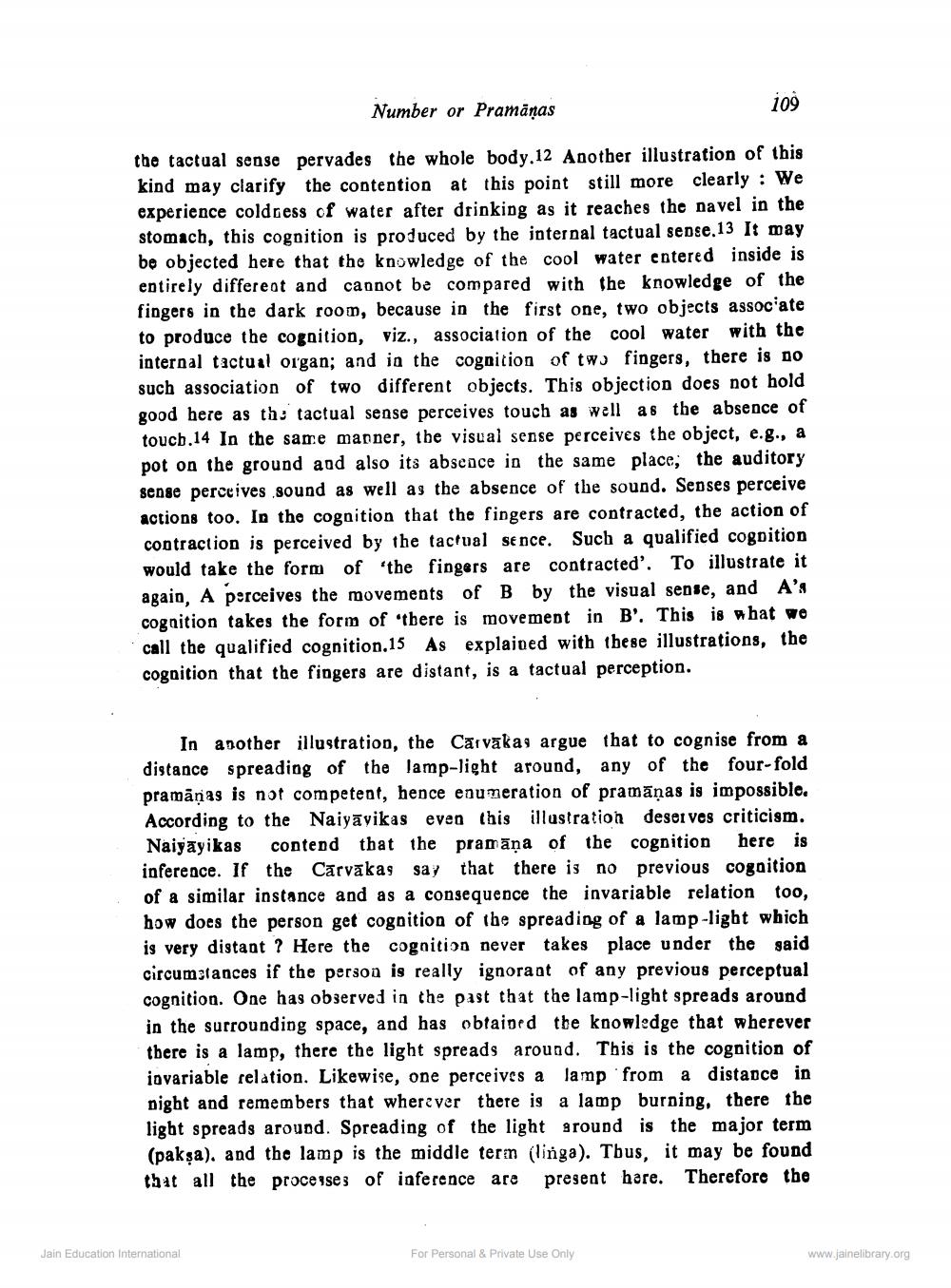________________
Number or Pramānas
109
the tactual sense pervades the whole body, 12 Another illustration of this kind may clarify the contention at this point still more clearly : We experience coldress of water after drinking as it reaches the navel in the stomach, this cognition is produced by the internal tactual sense,13 It may be objected here that the knowledge of the cool water entered inside is entirely different and cannot be compared with the knowledge of the fingers in the dark room, because in the first one, two objects associate to produce the cognition, viz., association of the cool water with the internal tactual organ; and in the cognition of two fingers, there is no such association of two different objects. This objection does not hold good here as th: tactual sense perceives touch as well as the absence of touch.14 In the same manner, the visual sense perceives the object, e.g., a pot on the ground and also its absence in the same place, the auditory sense perceives .sound as well as the absence of the sound. Sepses perceive actions too. In the cognition that the fingers are contracted, the action of contraction is perceived by the tactual sence. Such a qualified cognition would take the form of the fingers are contracted'. To illustrate it again, A perceives the movements of B by the visual sense, and A's cognition takes the form of there is movement in B'. This is what we call the qualified cognition.15 As explained with these illustrations, the cognition that the fingers are distant, is a tactual perception.
In another illustration, the Carvāka, argue that to cognise from a distance spreading of the lamp-light around, any of the four-fold pramāṇas is not competent, hence enumeration of pramāṇas is impossible. According to the Naiyāvikas even this illustration deserves criticism. Naiyāyikas contend that the pramāņa of the cognition here is inference. If the Carvãkas say that there is no previous cogaition of a similar instance and as a consequence the invariable relation too, how does the person get cognition of the spreading of a lamp-light which is very distant ? Here the cognition never takes place under the said circumstances if the person is really ignorant of any previous perceptual cognition. One has observed in the past that the lamp-light spreads around in the surrounding space, and has obtained the knowledge that wherever there is a lamp, there the light spreads around. This is the cognition of iavariable relation. Likewise, one perceives a lamp from a distance in night and remembers that wherever there is a lamp burning, there the light spreads around. Spreading of the light around is the major term (pakşa), and the lamp is the middle term (linga). Thus, it may be found that all the processes of inference are present here. Therefore the
Jain Education International
For Personal & Private Use Only
www.jainelibrary.org




